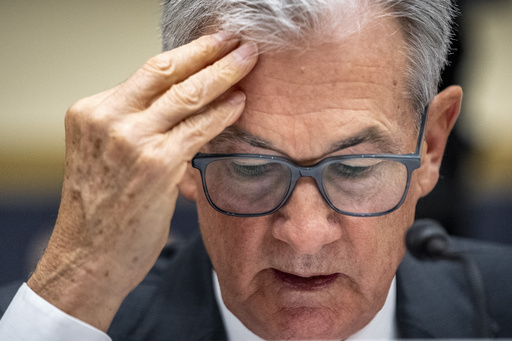JACKSON HOLE, Wyoming (AP) — When Federal Reserve Chair Jerome Powell delivers a high-profile speech Friday in Jackson Hole, Wyoming, many analysts think he could make one thing clear: That the Fed plans to keep its benchmark interest rate at a peak level for longer than had been expected.
Powell isn't likely to say whether the Fed will continue raising rates. But he may signal that any rate cuts are unlikely until well into next year. The central bank has already helped drive inflation down from painfully high levels. But Fed officials have said they need to keep rates high to further slow borrowing and spending and reduce inflation to their 2% target.
The Fed chair's speech — at an annual conference of central bankers — comes at a time of heightened uncertainty about the economy and interest-rate policies. Businesses are still hiring, and consumer spending has remained resilient even while inflation has eased from a peak of 9.1% in June 2022 to 3.2%.
At the same time, “core” inflation, which excludes volatile food and energy prices, has remained elevated at 4.7% despite the Fed's streak of 11 rate hikes beginning in March 2022. And by raising its key rate from near zero to a 22-year high of 5.4%, the Fed has made borrowing much more expensive for consumers and businesses. Soaring mortgage rates, for example, have contributed to a 22% drop in home sales through the first seven months of 2023 compared with the same period last year, causing a potential headwind for the economy.
Though overall inflation has steadily dropped, the mixed economic picture has in some ways left Powell in a tougher position than he faced in Jackson Hole last year, when he delivered a blunt warning about the Fed's plans to keep rapidly raising rates to fight inflation.
Now, the Fed faces a more subtle challenge: How to navigate a narrow path requiring it to slow growth and further cool inflation without derailing the economy and causing a recession. Economists call this rare outcome a “soft landing.”
Many analysts say that despite the progress the Fed has made so far, Powell can't afford to let down his guard and say anything that would sound like a declaration of victory. They instead expect him to signal that he intends to keep rates at high levels for as long as needed. Even if the Fed's policymakers don't further increase borrowing costs, they're unlikely to reduce them anytime soon.
A year ago in Jackson Hole, Powell had warned that the Fed's coming rate hikes would “bring some pain to households and businesses, ” likely in the form of job losses and potentially a recession. Raghuram Rajan, an economist at the University of Chicago and a former head of India's central bank, suggested that if Powell is tempted this year to swing the other way and predict a “painless disinflation,” he should avoid doing so.
“The notion that we’ve shifted from a painful disinflation to painless disinflation would undercut the Fed,” Rajan said. “It would suggest they don’t have the stomach” to do what's needed to tame inflation.
Surprisingly, despite the Fed's aggressive rate hikes, the U.S. unemployment rate stands exactly where it did when Powell spoke last year: 3.5%, barely above a half-century low. Still, Rajan said he doubts the Fed can achieve its 2% inflation goal without causing some rise in unemployment. A higher jobless rate would likely slow wage growth and ease inflation pressures. When layoffs spread, workers are typically less able to gain big pay raises.
In an interview this week, Raphael Bostic, president of the Federal Reserve's Atlanta branch, said he favors keeping the Fed's key rate at its current level at least well into next year. In June, when the 18 members of the Fed’s rate-setting committee last issued their quarterly projections, they predicted that they would raise rates once more this year.
That expectation might have changed in light of milder inflation readings the government has issued in recent weeks. The Fed's policymakers will update their interest rate projections when they next meet Sept. 19-20.
“We are just going to have to stay restrictive for quite a while,” Bostic said, "until we are sure, sure, sure, sure, sure, sure that inflation is not going to bounce off and bubble up far away from our target.”
Bostic said he thinks the Fed’s benchmark rate is currently high enough to restrain the economy and cool inflation over time. But he added that he isn't “even contemplating a cut until the latter part of 2024.”
In his speech Friday, Powell may sound a similar message: That even as the Fed nears the end of its cycle of rate hikes, it won't ease up in its mission to conquer inflation.
Another key figure at the Jackson Hole conference — Christine Lagarde, president of the European Central Bank — will deliver a speech on Friday as well. Analysts expect Lagarde to seek to keep the ECB's options open at its next meeting in September. Investors increasingly expect the ECB to refrain from a rate hike at that meeting.

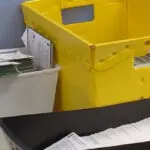 Santa Cruz County ballot errors impact more than 1,100 voters
Santa Cruz County ballot errors impact more than 1,100 voters
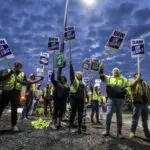 Strike at Boeing was part of a new era of labor activism long in decline at US work places
Strike at Boeing was part of a new era of labor activism long in decline at US work places
 Google defeats lawsuit over gift card fraud
Google defeats lawsuit over gift card fraud
 Delay in Chile mining permits a serious problem, says local head of Freeport
Delay in Chile mining permits a serious problem, says local head of Freeport
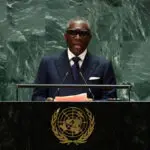 Equatorial Guinea orders crackdown on sex in government offices after videos leaked
Equatorial Guinea orders crackdown on sex in government offices after videos leaked
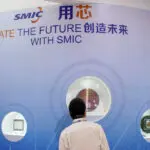 US needs to crack down on Chinese chipmaker SMIC, Republican lawmaker says
US needs to crack down on Chinese chipmaker SMIC, Republican lawmaker says
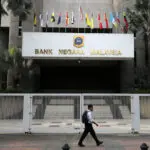 Malaysia central bank set to manage market volatility, monitoring US election
Malaysia central bank set to manage market volatility, monitoring US election
 Book Review: 'The Name of This Band is R.E.M.' is a vivid journey through the rock band's history
Book Review: 'The Name of This Band is R.E.M.' is a vivid journey through the rock band's history
 Rare letter signed by Founding Fathers expected to fetch $1 million at auction
Rare letter signed by Founding Fathers expected to fetch $1 million at auction
 Jerry Jones says Dak Prescott likely out at least 4 games with IR move because of hamstring injury
Jerry Jones says Dak Prescott likely out at least 4 games with IR move because of hamstring injury
